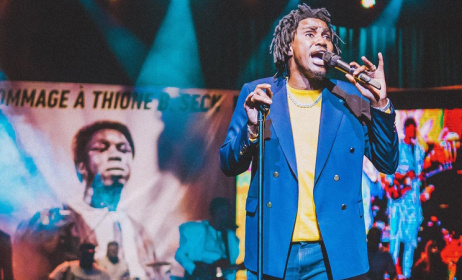Streaming services publish mechanical rate proposals
Digital service providers, including Spotify, YouTube Music, Apple Music and Amazon Music, have officially published their mechanical rate proposals for the 2023-27 period.
 NMPA president and CEO David Israelite.
NMPA president and CEO David Israelite.
The Copyright Act requires the Copyright Royalty Judges to conduct proceedings every five years to determine the mechanical royalty rates paid by streaming services to songwriters and publishers. The current proceedings, titled the Determination of Rates and Terms for Making and Distributing Phonorecords, or simply Phonorecords IV, look at the period of 2023-27.
The proposals were published on the Copyright Royalty Board (CRB) website last week. Before they were made available to the public, the National Music Publishers’ Association (NMPA) president and CEO David Israelite lambasted the streaming services on Twitter for demanding “the lowest royalty rates in history” ahead of the CRB’s mechanical rate determination for 2023-27.
“Songwriters should all take note of what these giant technology companies propose – their proposals prove how much, or how little, they truly value the creators they rely on,” he told Music Business Worldwide.
Most of the proposals represent pre-2018 mechanical royalty rates. Spotify proposed a 10.5% payment for “standalone non-portable subscription offering – streaming only”. The same rate was suggested for other categories, except for the “mixed service bundle”, which was 11.35%, as well as locker-service payments and content that includes ringtones, permanent song downloads and interactive streams. Regarding total content cost (TCC), which is earnings paid to record labels and master-recording owners, the Swedish company is pushing for 22%, as well as 20.65% for paid locker services. Pandora and Amazon Music gave similar proposals.
Apple Music’s proposal suggests “eliminating the total content cost prong” completely and that the royalty rate for most categories should be the portion of revenue rate multiplied by the service provider revenue. Apple also proposed that “royalties be discounted based on the proportional value of the standalone price of the components of the bundle. By way of example, if the bundle is priced to consumers at a 20% discount compared to the standalone price of the various components of the bundle, then royalties will be reduced 20% as well”.
Amazon Music, meanwhile, says the Copyright Royalty Judges should set the 2023-27 mechanical rate to level out the “complementary-oligopoly power that publishers and record labels wield”.
The NMPA made its own counterproposals for the upcoming period, which the organisation believes are more equitable to creators, with a mechanical royalty that would increase streaming services’ publisher payments to 20% of revenue, or $0.0015 per play, and a TCC of 40%, or $1.50 a subscriber, calculated monthly.
“The headlines each and every day demonstrate how much streaming and streaming services continue to drive ever-growing revenues for publishers and performing rights organisations, massive investments in publishing catalogues, and innovative tools and features that connect songwriters to fans in ways never possible before,” the president and CEO of the Digital Media Association, Garrett Levin, said. “This CRB proceeding, like any other, does not happen in a vacuum. Mechanical licensing is just one of the multiple, necessary licences for streaming services within a single segment of publisher and songwriter revenue streams. And that itself is one segment of the complete digital music economy.
The CRB has reopened the comment period on Phonorecords IV until 22 November.






















Commentaires
s'identifier or register to post comments